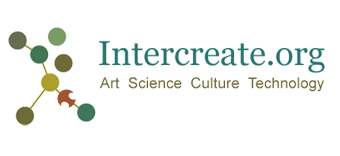
Introdcution
Professor Hideo Iwasaki runs the Laboratory for Molecular Cell Network & Biomedia Art at the Department of Electric Engineering and Bioscience of Waseda University in Japan.
In the images on this page it is possible to discern the intersection of art and science quite clearly. There is a blending which is a combination of aesthetics and scientific method.
This is quite different from the oft stated assumption that science and art are at loggerheads – that one (science) seeks to close knowledge by final solutions whereas the other (art) is open in terms of potential understandings.
The closure of scientific solutions often rests at a certain level of investigation. Thus when the structure of DNA was finally settled upon by Watson and Crick (based on the work of collaborative predecessors), there was closure at a specific level of investigation but of course the doors that have opened are far reaching and not able to be anticipated fully.
If the level of understanding of the Watson-Crick model is broadened then the dynamic role of DNA in the wider world becomes apparent, singularities in solutions dissolve and the integrated nature of biological systems becomes apparent.
What I mean by this is that in the laboratory, DNA is a molecule whose structure is examined and tested. It is only when stepping back, and examining experimentation from an ethical perspective that questions arise. What is the allowable extent of DNA manipulation? If an athlete was bred for physical supremacy should that athlete be allowed to compete against mere natural biological specimens?
It is how the DNA plays out at the 1:1 scale of reality that becomes the important factor. These aspects are open ended rather than closed. If science can prompt such questions, then structurally the same process is active as when art prompts similar questions.
Increasing the depth of understanding about a subject belongs to neither to the arts nor the sciences and can be the domain of both.
In the end it is not how art and science are different, but the fact they have both differences and similarities that matters. The boundary is one that can be dissolved and then be reformed dynamically.
As well as his cyanobacteria forms in the shape of proto-humans, we have asked Professor Iwasaki to also exhibit a paper cutout, which are expressions of complex natural forms made with scissors and paper. These works also follow a line intersecting science and art decisively. Below is shown a detail of Boundary Garden. For more information see http://www.f.waseda.jp/hideo-iwasaki




